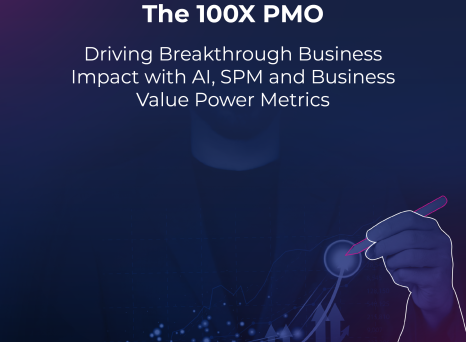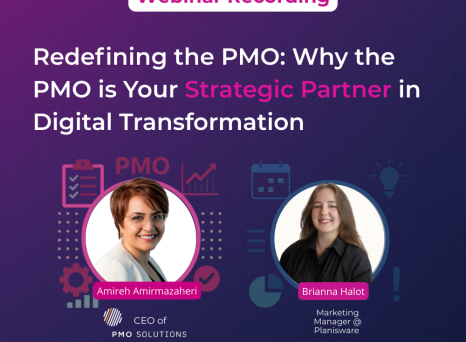Imagine you’re going on a trek. It’s a long journey across varying terrains, but the view will be worth it when you read the end. The only trouble is you don’t have a map.
You know what direction you’re starting in, but how do you avoid hidden dangers? How do you know if you’re still on track when you can’t see the endpoint?
A project without visibility is a bit like this. You might know what tasks you need to complete to get your project off the ground. But without sharing project management information, how can you identify risks? And subsequently, make the right decisions to solve issues?
Moreover, these difficulties scale exponentially when you consider them at the portfolio level. You’ll struggle to facilitate executive decision-making without accurate, real-time project data. This will make it harder to:
- Identify risks
- Provide information to solve issues.
- Facilitate coordination within the project team and at portfolio level.
- Manage priorities rationally
Essentially, without a PMO, you’ll be trekking blind and will miss the milestones that make your business work.
The PMO Role: The Nexus of Information
Gaining visibility over projects enables executive decision-making. But once you have all the accurate information, what do you do with it?
A Project Management Office (PMO) is right in the middle of project management. It’s their job to control and analyze information and follow up on it—to report at the project level and enforce consistency at scale.
Seeing the Past and the Future
A PMO provides stakeholders with risks and issues, providing context, solutions, and impacts. This isn’t a single document, however. The overarching purpose is to aid decision-making, so you need to adapt this information for each stakeholder's authority level.
It can also help with forecasting and making predictions based on the analysis of previous projects. That way, everyone knows what to do going forward—not only with their current project but with future projects too.
Take ADNOC as an example. The Abu Dhabi National Oil Company wanted to improve efficiencies, reduce operational expenses, and increase profits. However, with more than 3,000 initiatives, 20 personnel roles, and 200 value streams, they needed a single source of truth to ensure accurate information on project progress. By deploying a project management tool that enhanced visibility, they could create a specific workflow for the entire life cycle of each initiative. This meant everyone involved in each project could clearly see what was happening and make better decisions.
Connecting Global with Local
Insight and foresight—these are key to the success of a PMO. This applies in one location or multiple.
Beam Suntory is a global provider of distilled spirits with distilleries in the US, Asia, Central America, and Europe. Because of the fast-moving nature of the market, the organization must respond quickly to changes across all brands.
With a PMO—and a PM tool that provides enhanced visibility—Beam Suntory can support all processes for every project. Despite Beam Suntory’s vast global presence, they can understand what’s important to the teams involved in execution and decision-making. They can then determine the future efficacies of projects and improve processes with the help of their project management tool.
“We’ve been able to grow our business considerably with opex increasing at a much slower rate than our growth, and I think part of that is because of the processes that we’re able to automate…” - Nick Duncan, R&D Systems Manager, Beam Suntory
Coordinating Stakeholders
Issues, risks, or scope changes can sometimes have a broader impact than their originating project. This is where the PMO helps to get everyone impacted on the same page so the right and most beneficial actions can be taken. The most common scenario is managing a single resource pool across multiple projects. But it could manifest in other ways too.
A digital transformation is a great alternative example. Perhaps you have a history of downtime in your production facilities. A PMO will enable you to gain the insights to recognize it’s because too many machines need parts changed simultaneously. It’ll then provide a roadmap for the digital transformation to install the AI to predict when you need to change parts.
At the same time, the PMO will manage multiple projects and coordinate with multiple departments. These may be short-term or long-term. Regardless, no matter what projects the PMO manages, they will align with the business’s strategic vision. This brings us to our next point.
Halfway Between Strategy and Execution
What are your business’s objectives? Do you know which projects will bring you closer to them? And, maybe most importantly, do you know how?
For example, if your business objective is to increase profits, your goal might be to take on larger, more valuable projects.
A PMO keeps the business’s strategic vision in mind with every decision. So while this means it undertakes projects that make good business sense, it also knows how to prioritize them and their subtasks.
For this to work, it needs timely and accurate insights. While Excel sheets may work for some organizations, consolidating the data within them takes a long time. This will mean you’ll make decisions based on old insights.
A PMO will provide real-time reporting so that organizations have an accurate overview of project status and resources.
Supporting Executive Decision-Making, Across All Projects
Organizations that lack visibility into their PM processes are flying blind. They’re operating without the insight to ensure current and future project success.
This is where a PMO can make all the difference.
With its ability to bridge the gap between entities, regardless of location, a PMO takes all information surrounding your projects into account. And with its analysis of past projects, can direct you going forward—so you can follow your business’s strategy more closely and make better business decisions.
“Actelion has roughly about 500 projects in the Planisware system. Not all of those projects are big projects. Some of them are just a couple of lines, some small activities which are to be tracked. What we do is use Planisware to plan big activities which are relevant for our company such as filings, such as new developments… it's a basis for discussions for decisions that we can show the impact of—the different decisions that we can, based on that, do selections of projects as well, or change the strategy.” - Hakan Kocabeyoglu, Group Leader Planning Performance, and Reporting, Actelion


